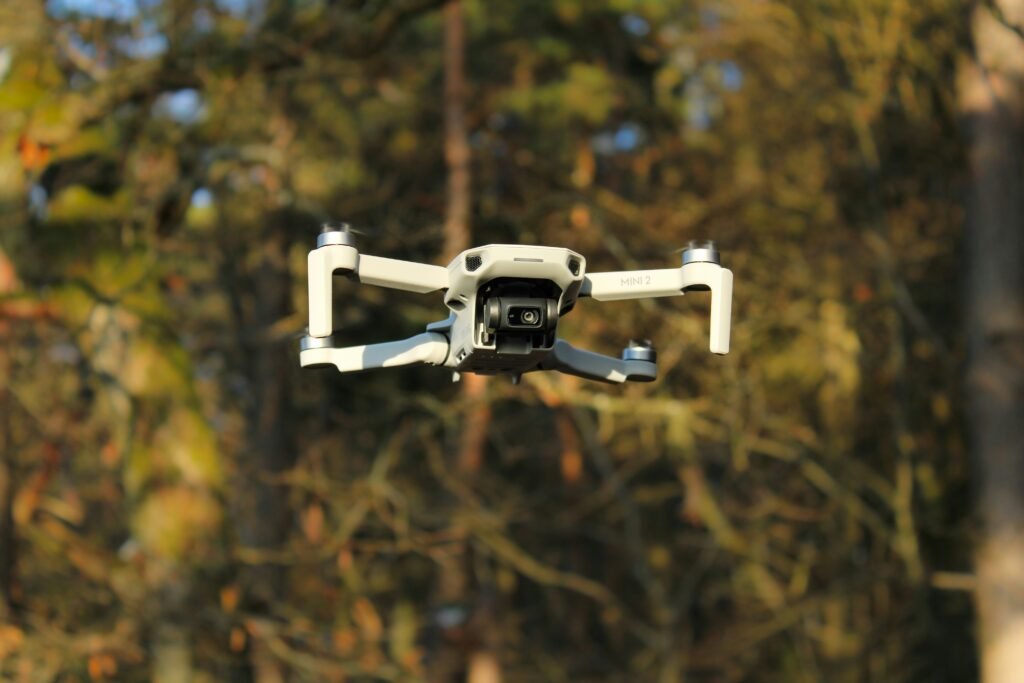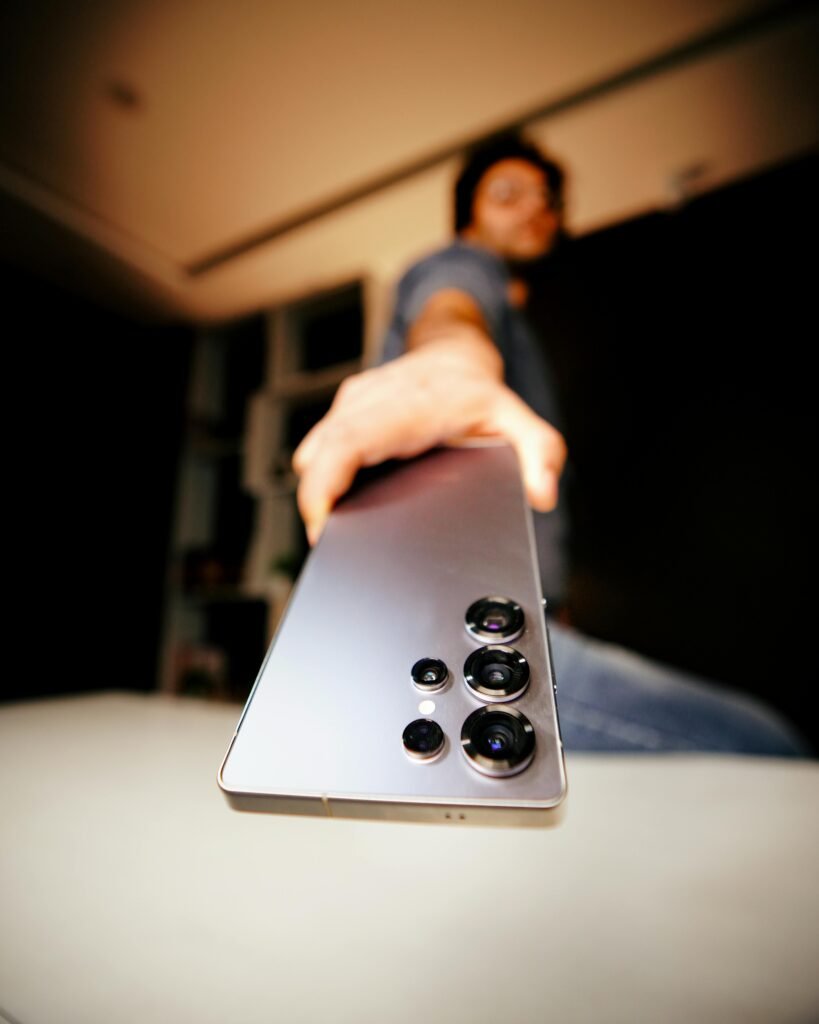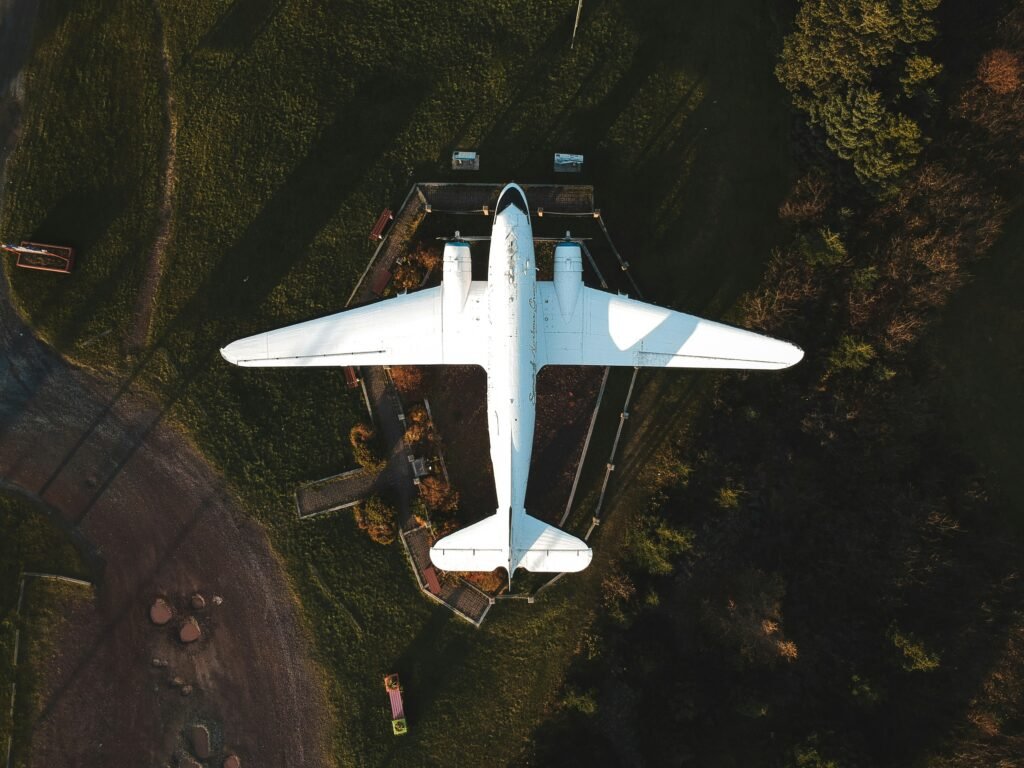
Unveiling the Next Generation of DJI Drones
The official announcement of DJI’s latest drone has sparked significant excitement within the aerial technology community. Set for release in the coming months, this new model promises to elevate the standards of consumer and professional drone capabilities. Positioned as a next-generation flagship, it integrates advanced technology that surpasses its predecessors, setting a new benchmark in drone performance.
Key features of this new DJI drone include an enhanced camera system capable of capturing 8K video and high-resolution images. This camera is accompanied by improved stabilization technology, which ensures smooth footage even in challenging flight conditions. Furthermore, the drone is expected to boast an extended flight time, enabling users to explore more extensive areas without the need for frequent recharging. The integration of artificial intelligence (AI) in flight operations will also enhance the user experience, allowing for more intuitive controls and automated flight modes that cater to both hobbyists and professionals alike.
What truly distinguishes this new drone from its predecessors is its sophisticated obstacle avoidance system. Enhanced sensors will provide a 360-degree awareness of the surrounding environment, significantly reducing the risk of collisions. Additionally, new user-friendly features, such as smart follow and waypoint navigation, promise to make capturing spectacular aerial footage easier than ever before.
The anticipation surrounding this release is palpable, with drone enthusiasts eagerly discussing its potential applications in photography, filmmaking, agriculture, and beyond. DJI has set high expectations for this new model, as the company aims to not only meet but exceed the demands of an ever-growing market. As the countdown to launch begins, the excitement within the community accelerates, reflecting the impactful innovation that DJI consistently brings to the world of aerial technology.
Key Features and Specifications
The latest DJI drone introduces several groundbreaking features and technical specifications that elevate it above its predecessors and competitors. One of the standout elements is its camera system, which boasts a remarkable 4K resolution and enhanced low-light performance. This advanced imaging capability allows users to capture stunning aerial footage and high-resolution images regardless of lighting conditions, making it ideal for both photography enthusiasts and professionals alike.
Another critical aspect of the new DJI drone is its impressive flight time. Users can expect up to 35 minutes of uninterrupted flight, a significant improvement that allows for longer filming sessions and exploration. This extended flight autonomy is complemented by a maximum range of 10 kilometers, enabling users to capture footage from greater distances without the need for frequent returns.
Safety and navigation have also received significant attention in this new model. The drone features an enhanced obstacle avoidance system, incorporating multiple sensors that provide 360-degree awareness. This technology not only detects obstacles in real time but also automatically adjusts the flight path to avoid collisions, enhancing overall safety during operation.
In terms of innovations, this DJI drone includes intelligent flight modes, such as Follow Me and Point of Interest, which allow for automated and effortless filming. These smart features employ AI to track subjects or navigate around predefined paths, yielding professional-quality results with minimal effort. Additionally, the drone is equipped with a robust return-to-home function, providing an extra layer of reassurance for users concerned about battery life or potential loss of control.
Overall, the new DJI drone impressively combines superior camera capabilities, extended flight duration, safety features, and cutting-edge technology, setting a new standard for aerial technology in the consumer market.
Enhanced User Experience
The new DJI drone introduces a remarkable enhancement in user experience through various innovative features. At the heart of this redesign lies an intuitive control system that simplifies piloting for enthusiasts of all skill levels. Both beginners and seasoned drone pilots will appreciate the thoughtful layout and responsiveness of the controls, which allows for seamless navigation even in complex environments.
Furthermore, the accompanying mobile app has seen significant advancements, providing users with a comprehensive suite of tools to optimize their flying experience. The app is designed to be user-friendly, ensuring that essential functions are easily accessible. It features a sleek interface that guides users through the setup process, facilitates real-time monitoring, and allows for easy adjustments of flight parameters. This streamlined functionality prepares beginners for success while providing experienced users with deeper customization options.
Customization plays a critical role in enhancing user satisfaction with the new DJI drone. Pilots can tailor settings such as camera controls, flight modes, and performance configurations to suit their individual preferences and flying styles. This level of personalization empowers users to engage with the drone in a way that resonates with their unique approach, contributing to a more rewarding experience.
Moreover, DJI has prioritized the educational aspect for new users. For those who are just entering the drone community, simplified tutorials and guided missions within the app pave the way for quicker skill development. Advanced features, such as automated flight paths, further allow less experienced users to capture stunning aerial footage without the stress of manual navigation.
In essence, the combination of intuitive controls, a robust mobile application, extensive customization capabilities, and educational resources culminates in a dramatically improved user experience with the new DJI drone.
Potential Applications and Use Cases
The newly launched DJI drone showcases an impressive range of potential applications across various industries, demonstrating its versatility and adaptability. One of the foremost areas where this drone excels is in photography and cinematography. With advanced imaging capabilities, including high-resolution cameras and sophisticated stabilization technology, filmmakers and photographers can capture stunning aerial shots that were previously challenging to attain. This makes it an invaluable tool for creative professionals seeking to elevate their visual storytelling.
In addition, the agricultural sector stands to benefit significantly from the integration of this drone technology. Farmers can utilize drones for crop monitoring, enabling them to assess plant health, identify areas needing irrigation or pesticide application, and optimize resource allocation. This data-driven approach not only enhances crop yields but also promotes sustainable farming practices, showcasing the drone’s role in modern agriculture.
Surveying and mapping is another critical application area for the new DJI drone. Equipped with advanced sensors and GPS technology, it can produce highly accurate topographical maps. Surveyors can collect data more efficiently and safely, reducing the time and costs typically associated with traditional land surveying methods. Whether for construction projects or environmental assessments, the precision offered by this drone is invaluable.
Furthermore, the drone is poised to play a crucial role in search and rescue operations. Its aerial capabilities allow for rapid assessment of disaster-stricken areas, aiding first responders in locating victims or assessing damage. The ability to cover large areas quickly and securely makes it a vital asset in emergency situations where every second counts.
These various applications demonstrate how the new DJI drone is not merely a flying camera but a sophisticated tool that enhances productivity, creativity, and safety across numerous fields. Its integration into these sectors suggests a future where aerial technology becomes increasingly essential in our daily lives.
Comparison with Previous Models
The introduction of the new DJI drone marks a significant advancement in aerial technology, prompting interest in how it compares with its predecessors. Historically, DJI drones have been highly regarded for their innovation in the consumer and professional drone markets, laying a solid foundation with models such as the Phantom series and the Mavic line. The latest model incorporates feedback from users of these earlier iterations, demonstrating DJI’s commitment to continuous improvement.
One of the notable improvements in the new DJI drone is its enhanced camera system. Whereas earlier models provided decent image quality, the latest version offers higher resolution and better low-light capabilities. These improvements cater to a growing demand among photographers and videographers for superior imaging options. Additionally, the drone features upgraded stabilization mechanisms, which were a common critique in earlier versions, particularly during rapid movements or in windy conditions.
However, some features available in previous models have been removed or modified. For example, while the previous Mavic models included certain autonomous flight modes, these modes have been streamlined in the new release to enhance usability and reduce complexity. DJI has opted to focus on refining fewer, more impactful functionalities rather than overloading users with options that may not be beneficial in practice.
Customer feedback on past models reveals a strong appreciation for DJI’s user-friendly interfaces, which the new drone seeks to uphold and enhance. By integrating more intuitive controls and improved app compatibility, the new drone aims to offer a seamless flying experience. Overall, the new DJI drone represents a culmination of past insights and advancements, strategically addressing user preferences and technological capabilities. Through this comparison, it is evident that the new model not only preserves the strengths of its predecessors but also pushes the envelope in aerial technology innovation.
Community Reactions and Feedback
The introduction of the new DJI drone has sparked significant excitement and anticipation within the aerial technology community. From professional drone pilots to everyday enthusiasts, reactions have poured in across various social media platforms, forums, and video-sharing sites. Influencers and content creators have eagerly shared their early impressions and feedback, creating a vibrant dialogue surrounding the product launch.
On platforms like Twitter and Instagram, users have taken to sharing their initial thoughts, often accompanied by stunning aerial shots taken with the new device. These posts frequently highlight the drone’s advanced camera capabilities, ease of use, and innovative features that set it apart from previous models. Many users express admiration for the enhancements made to battery life and stability, which are crucial factors for both hobbyists and professionals. Comments on these posts range from enthusiastic endorsements to constructive criticism, showcasing the diversity of perspectives within the community.
Drone enthusiast forums have organized extensive discussions, diving into the technical specifications and real-world performance of the new DJI drone. Members analyze features such as obstacle avoidance, 4K camera quality, and flight range, weighing the pros and cons based on initial experiences. Beta testers have also shared valuable insights, offering a glimpse into how well the drone performs under various conditions and use cases. The feedback from these users is particularly influential, as they provide anecdotal evidence that stakeholders in the drone industry often rely on when making decisions.
In conclusion, the community’s response to the new DJI drone reflects a blend of enthusiasm and critical analysis. As the conversations unfold, it will be fascinating to observe how these reactions shape the adoption and overall perception of this notable addition to the aerial technology landscape.
Pricing and Availability
The anticipated launch of the new DJI drone has generated considerable enthusiasm among drone enthusiasts and professional users alike. As we delve into the specifics of its pricing and market availability, it is essential to note that exact figures have not yet been officially confirmed. However, industry insiders speculate that the starting price will be competitive, likely positioned within the range of existing models to attract a broad spectrum of customers. Generally, DJI drone prices have varied based on features and specifications, and this new device is expected to follow suit.
In terms of availability, the new DJI drone is projected to hit the shelves by the end of this fiscal quarter. The initial release is expected to cater to select markets, including North America, Europe, and parts of Asia. Customers in these regions might enjoy the first chance to experience the advanced technology and innovative features this drone offers. It should also be noted that while the initial rollout will focus on major urban areas, further availability will expand to include more remote locations in subsequent months.
For those eager to get their hands on the new DJI drone, pre-order options will likely be available ahead of the official launch date, allowing enthusiasts to secure their units promptly. Moreover, DJI is known for offering bundled packages that enhance the overall user experience. These packages might include essential accessories such as additional batteries, protective cases, and software subscriptions, thus providing comprehensive value for both new and returning customers. Potential promotional offers are also anticipated, which may include limited-time discounts or exclusive merchandise for early adopters. Overall, the pricing and availability of the new DJI drone are set to be competitive, making it accessible to a wide user base, while also offering unique purchase incentives.
Future Developments and Updates
The landscape of aerial technology is constantly evolving, and DJI’s latest drone is no exception. As consumers adapt to and provide feedback on its capabilities, DJI is likely to prioritize enhancements that reflect user needs and preferences. Software updates will play a pivotal role in maximizing the drone’s potential, with features aimed at refining flight performance, camera quality, and user ergonomics. One speculation highlights an enhanced obstacle avoidance system, which could include improved sensors and AI-driven algorithms for safer navigation in complex environments.
Another focus for future updates may revolve around expanding the drone’s usability in various fields, including cinematography, surveying, and emergency response. For instance, DJI could introduce specialized software packages catering to different industries, which could incorporate tailored flight modes or automated flight paths to facilitate specific tasks. User feedback initiated through community forums or surveys could significantly influence these future features and improvements. By engaging its user base, DJI has the opportunity to evolve its offerings beyond standard capabilities.
Furthermore, potential hardware upgrades could see higher resolution cameras or more efficient battery technologies, extending flight times and enhancing imaging. Rumors suggest DJI might also implement advanced connectivity features, enabling seamless streaming and real-time data sharing, which would resonate particularly well with content creators and professionals relying on instantaneous feedback for their work.
As we gain more insight into user experiences and technological advancements, it is clear that the future of DJI’s drone technology will be recognized for its adaptability and responsiveness to user demands. The innovation doesn’t stop at launch; rather, it marks the beginning of an ongoing evolution fueled by collective input and foresight into aerial capabilities.
Conclusion and Final Thoughts
In this blog post, we have explored the various advancements and technological innovations brought forth by the new DJI drone. It represents a significant leap forward in aerial technology, designed to cater to both enthusiasts and professional users alike. With its advanced features such as improved flight stability, enhanced camera quality, and intelligent flight modes, the DJI drone sets a benchmark for future developments in the industry.
We highlighted how the integration of high-definition cameras with cutting-edge stabilization systems enables users to capture breathtaking aerial footage with unprecedented clarity. Furthermore, the intelligent features such as automated flight paths and obstacle avoidance technology empower users to focus on creativity rather than the technicalities of piloting a drone. These enhancements fundamentally alter the way both amateurs and professionals approach aerial photography and videography.
The introduction of this new DJI drone also signals a transformative moment in the drone market. Competitors will likely respond with innovations of their own, further pushing the boundaries of what is possible in aerial technology. Consequently, drone enthusiasts can expect a wider array of options and capabilities as companies strive to keep pace with DJI’s advancements.
As we stand on the brink of a new era in drone technology, it is evident that the latest offerings from DJI not only elevate the recreational drone experience but also enhance the productivity of professionals across various sectors. This evolution offers exciting possibilities for interpreting the world from new heights and may redefine how we utilize aerial technology in various sectors, from cinematography to agriculture.
Clearly, this is a remarkable moment for drone aficionados and industry professionals alike, as the new DJI drone opens doors to unique opportunities, ensuring that the sky is truly the limit.




